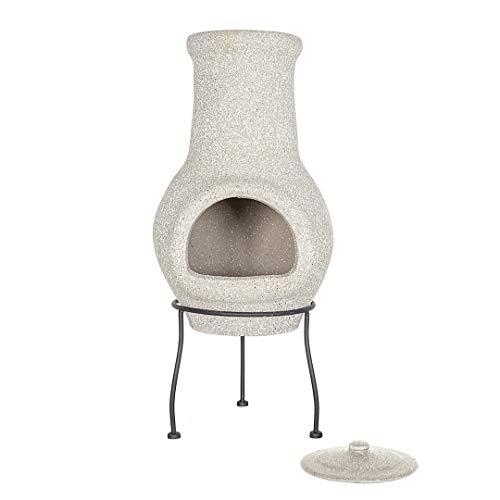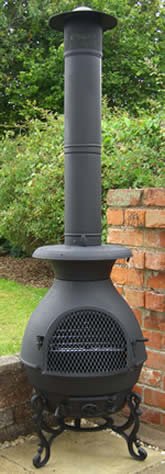Choosing Between Chimineas and Fire Pits
The decision between a fire pit or Chiminea is a matter of preference to your personal preferences in aesthetics and the overall layout of your garden. Chimineas are an elegant design that are a great match for rustic outdoor decor. Fire pits are, on the other hand, have clean lines and fit in with contemporary designs for gardens.
Fire pits should be kept away from any flammable materials for safety reasons. Chimineas can also be used for cooking and are more secure in windy environments because of their enclosed design.
Aesthetics
Chimineas in addition to fire pits can bring warmth to any outdoor space. However, deciding on the best chiminea one is based on your personal preferences and space requirements. Fire pits offer more flexibility in design than chimineas, but come with additional costs like fuel and maintenance. In contrast, chimineas provide more traditional appearance with controlled heat and smoke. Understanding the differences between the two options, and evaluating your requirements are the initial steps to selecting the most suitable American-made chiminea log burner.
 Chimineas are freestanding, front-loading outdoor fireplaces or ovens that contain a vertical vent (or chimney). They are usually constructed of clay or terracotta but can also be found in cast iron, metal, or steel varieties. Chimineas made of clay are more traditional and can be very decorative however, they require care due to their fragility. Metal versions are more robust and can handle higher temperatures.
Chimineas are freestanding, front-loading outdoor fireplaces or ovens that contain a vertical vent (or chimney). They are usually constructed of clay or terracotta but can also be found in cast iron, metal, or steel varieties. Chimineas made of clay are more traditional and can be very decorative however, they require care due to their fragility. Metal versions are more robust and can handle higher temperatures.
The unique design of the chiminea tall draws smoke upwards, away those who are seated around it. This makes it a great option for small spaces where a good way to manage smoke is crucial. The open top makes them easier to clean and they can be used in conjunction with a grill to cook. They are also safer than fire pits as they don’t create as many sparks.
Fire pits, on other hand, are designed to permit the full combustion of wood. They can also be used with various fuel types. They are well-liked for patios in backyards, and are often placed close to seating areas. They can burn logs of any size, as well as twigs or small chiminea branches to create more controlled flames.
The initial investment and ongoing expenses are two major considerations when deciding between a chiminea or a fire pit. While a chiminea with grill may cost more initially, its durability and ease of use can lower the cost over time. On the other hand the fire pit may be less expensive, but it will require more frequent maintenance and replacement parts. Furthermore, a chiminea might have a lower impact on the environment due to its controlled burning and less smoke, whereas a fire pit can generate more emissions and smoke.
Heat output
The amount of heat that a chiminea generates depends on the size and kind of wood used and the position it is placed in the fire. Dry well-seasoned wood will generate more heat than green or damp wood. Also, a chiminea that isn’t blocked by trees or other structures will absorb more sun’s heat than one that is shaded. Chiminea chimneys can direct more heat in the air, particularly when the funnel design of the chiminea is utilized.
The perception of warmth is different for every individual. How warm you feel depends on many aspects, including the type of clothing worn as well as your metabolism and other physiological factors. Despite these factors, chimineas remain a great source of warmth for small groups or intimate gatherings.
Chimineas have a wide base and an open chimney that draws in air to fuel the flames. These units can be made from clay, terracotta cast iron or steel, with the metal versions typically able to handle high temperatures and being less likely to rust. Clay and terracotta models have an elegant look, but tend to crack with time and require special care. Cast iron models are more robust and can be used to cook food. They are also able to hold larger logs.
Apart from being a stunning decorative element, these units are also excellent to heat outdoor spaces and can be positioned on the patio or in the backyard to create a cozy atmosphere. Many homeowners opt to pair a chiminea with a grill for added cooking capabilities.
As opposed to fire pits, fire pits have a smaller opening to the body, which limits the size of logs you can use. These units can also produce more sparks and should be stored in a secure location. In general, a fire pit is ideal for large outdoor spaces where there are many people who would appreciate its warmth when the sun goes down.
Smoke control
If you’re looking to give an instant rustic vibe to your patio or garden, a chiminea is a great way to create a welcoming area to gather with family and friends. Historically used for heating and cooking decorative fireplaces are available in a variety of materials, including traditional clay and contemporary cast iron models. They are ideally positioned close to the ground and have an open flame design that draws in oxygen to ignite, while keeping smoke away from people.
Chimineas radiate heat outwards from the front opening to warm people who are seated near them. The chimney stack may be a bit low, causing plenty of smoke to be generated, especially if you’re burning wood that have not been fully well-seasoned. Carbon monoxide, which is a colorless and odourless gas, can build up when the logs are not fully seasoned. It is possible to avoid this by using wood that has been treated or fuel alternatives like bioethanol.
 Fire pits are open from all sides, allowing the heat to be felt throughout a 360 degree radius. However, they can produce a significant amount of smoke depending upon the direction of wind and the size of the logs. This can be avoided by selecting a model with double wall construction that allows for greater airflow and minimizes smoke emission.
Fire pits are open from all sides, allowing the heat to be felt throughout a 360 degree radius. However, they can produce a significant amount of smoke depending upon the direction of wind and the size of the logs. This can be avoided by selecting a model with double wall construction that allows for greater airflow and minimizes smoke emission.
Both fire pits and chimineas for sale require regular maintenance to ensure they function safely. Choose the best option based on your priorities. Factors to consider include security, maintenance requirements and environmental impact. Choose a chiminea which is compliant with local laws and regulations pertaining to outdoor fires. Also, choose eco-friendly fuel options to minimize environmental impact.
In terms of safety, chimineas are generally safer than fire pits since they contain the flame and move it upwards. They are also more stable than fire pits because they are on a stand rather than being sat directly on the ground however it is essential to keep them away from any flammable items like fences and sheds. However, they can still emit sparks and smoke that can blow into seating areas, so it is recommended to use the spark screens when sitting close to them.
Maintenance
Due to their fragility Chimineas should be placed on a surface that is stable. They should be placed on a level surface and it is crucial to keep pets and children at a safe distance to avoid accidents. The body of a chiminea will remain hot for several hours after it has been lit, so make sure to keep it away from any flammable objects or structures. Avoid putting out the fire by using water, as this can cause the material to crack or break. A fire pit that is made of strong materials such as metal is recommended since it can withstand a higher degree of heat and is less likely to be damaged by snow or rain.
Both kinds of outdoor fire pits can create a stylish centerpiece in any patio or backyard. While chimineas have a rustic look and fire pits have a more modern look, they are suitable for a variety of garden and home styles. When choosing between these two options, take into account personal aesthetic preferences as well as maintenance capabilities and environmental concerns.
Depending on the material, both chimineas as well as fire pits are available in a range of sizes and styles to match any space. Chimineas made of clay have the look of a Mexican heritage, while steel firepits are durable and easy to clean. Take into consideration the initial investment and long-term costs of each one in addition to deciding which one is right for you.
Chimineas produce less smoke and have fewer emissions. This helps reduce health risks and nuisances to neighbours. The fuel choices play a crucial role in this regard, and seasoned wood is preferred for a lower smoke output.
Chimineas are also more comfortable to use for entertaining guests. Their enclosed design and chimney stacks can direct smoke upwards to prevent inhalation. A fire pit however, is more open and exposed to winds, which can increase the amount of smoke produced. Both models can be green if you make the right fuel choice Chimineas are more equipped to reduce environmental impact than fire pits.

